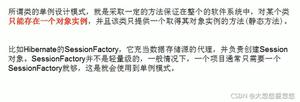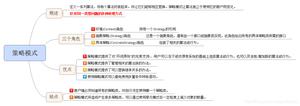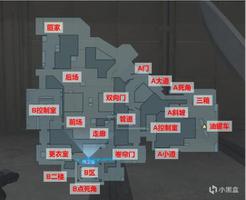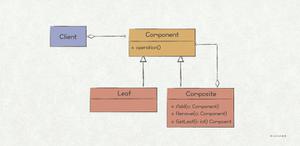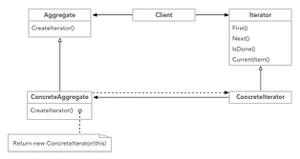多属性、多分类MySQL模式设计

一、导读
这是来自B乎的一个问答。 当数据同时具备多个属性/分类时,改如何设计表结构和查询?
二、需求描述
我偶尔也会逛逛B乎,看到一些感兴趣的话题也会回复下。 有一次,看到这样的一个话题:
链接:https://www.zhihu.com/questio...
[mysql] 当数据同时属于多个分类时,该怎么查询?
分类cate字段为[1,2,3,4,5] ,假如要查询满足分类’2’和’5′ 的数据该怎么查询? 我尝试过用 cate like ‘%2%’ AND cate like ‘%5%’去查。 想问有没有更好的办法,我这样写数据少了还好,多了根本没法查,效率太低了。
恰好我以前做过类似的业务需求设计,所以就回复了这个问题。
三、模式设计思路
这个需求可以有几种不同的解决思路,我们分别展开说一下。
(一)用bit数据类型
大概思路如下:
1、物品属性列c1 用bit数据类型 来表示,也就是只有0、1两种取值
2、当物品属性具备某个分类属性时,其值为1,否则为0
3、假如共有5个分类,当物品拥有全部分类属性时,则其值为11111,若其不具备第3个分类属性,则其值为11011,在数据库中转成十进制存储
4、上述两种情况下,将二进制转换成十进制表示,即分别是31和27
[root@yejr.me] [zhishutang]> select conv(11111, 2, 10), conv(11011, 2, 10);+--------------------+--------------------+
| conv(11111, 2, 10) | conv(11011, 2, 10) |
+--------------------+--------------------+
| 31 | 27 |
+--------------------+--------------------+
5、然后,只需要对该列用十进制值进行查询比对就行 6、现在如果想判断是否同时具备2、5两个分类属性时,其二进制表示为01001,转成十进制为9,只需要用条件 where c1=9 即可
我们来演示一下:
[root@yejr.me] [zhishutang]>show create table t_bitG*************************** 1. row ***************************
Table: t_bit
Create Table: CREATE TABLE `t_bit` (
`id` int(10) unsigned NOT NULL AUTO_INCREMENT,
`c1` int(10) unsigned NOT NULL DEFAULT "0",
`c2` varchar(10) NOT NULL DEFAULT "",
PRIMARY KEY (`id`),
KEY `c1` (`c1`)
) ENGINE=InnoDB;
insert into t_bit select 0,conv(00001, 2, 10), "item1";
insert into t_bit select 0,conv(00011, 2, 10), "item2";
insert into t_bit select 0,conv(00111, 2, 10), "item3";
insert into t_bit select 0,conv(01111, 2, 10), "item4";
insert into t_bit select 0,conv(11111, 2, 10), "item5";
insert into t_bit select 0,conv(10111, 2, 10), "item6";
insert into t_bit select 0,conv(11011, 2, 10), "item7";
insert into t_bit select 0,conv(11101, 2, 10), "item8";
insert into t_bit select 0,conv(11110, 2, 10), "item9";
[root@yejr.me] [zhishutang]>select * from t_bit;
+----+----+-------+
| id | c1 | c2 |
+----+----+-------+
| 1 | 1 | item1 |
| 2 | 3 | item2 |
| 3 | 7 | item3 |
| 4 | 15 | item4 |
| 5 | 31 | item5 |
| 6 | 23 | item6 |
| 7 | 27 | item7 |
| 8 | 29 | item8 |
| 9 | 30 | item9 |
+----+----+-------+
[root@yejr.me] [zhishutang]>select * from t_bit where c1 = conv(11011,2,10);
+----+----+-------+
| id | c1 | c2 |
+----+----+-------+
| 7 | 27 | item7 |
+----+----+-------+
#同时我们也注意到这个SQL是可以正常使用索引的
[root@yejr.me] [zhishutang]>desc select * from t_bit where c1 = conv(11011,2,10)G
*************************** 1. row ***************************
id: 1
select_type: SIMPLE
table: t_bit
partitions: NULL
type: ref
possible_keys: c1
key: c1
key_len: 4
ref: const
rows: 1
filtered: 100.00
Extra: NULL
下面两种方法是B乎网友的回复,大家也可以参考下。
1、用JSON数据类型,然后利用JSON_CONTAINS()函数进行查询
2、用SET数据类型,然后利用FIND_IN_SET()函数进行查询
不过,JSON和SET这两种数据类型都不方便加索引以及利用索引扫描,即便是用了5.7的JSON+虚拟列功能,索引效率也是比较低的。而支持JSON数据类型 多值索引(multi-valued Indexes) 也要8.0.17 以上版本才支持。
四、总结
这样看来,总的来说,用二进制转十进制方式来解决本案例需求更为高效,也欢迎提出更多方案思路。
延伸阅读
- Multi-Valued Indexes
- The SET Type
以上是 多属性、多分类MySQL模式设计 的全部内容, 来源链接: utcz.com/z/531695.html

